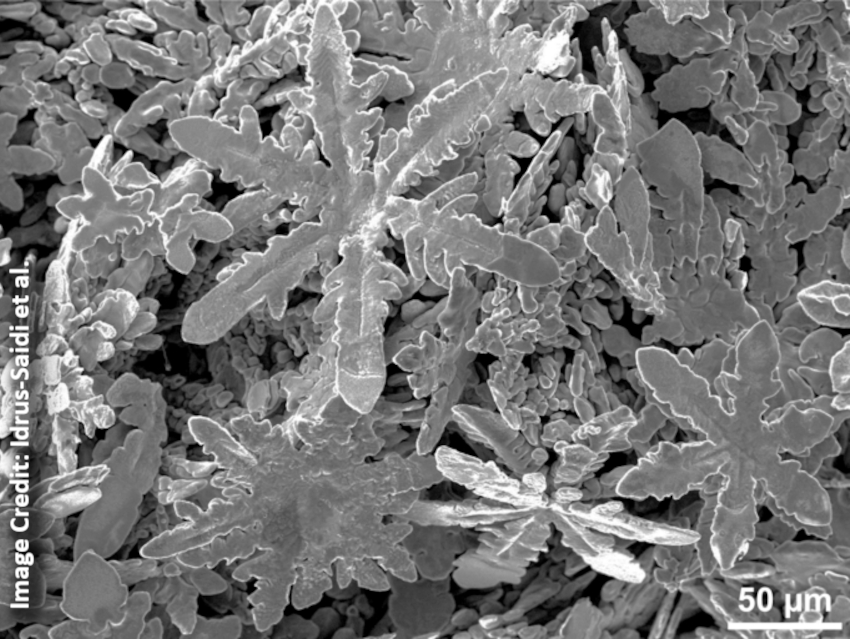Snowflakes are ice crystals with high symmetry and a fascinating diversity of shapes. Torben Daeneke, RMIT University, Melbourne, Australia, Nicola Gaston, University of Auckland, New Zealand, Kourosh Kalantar-Zadeh, University of New South Wales (UNSW), Kensington, Australia, and University of Sydney, Darlington, Australia, and colleagues have found that metallic “snowflakes” can be grown using a liquid metal as the solvent (example pictured).
The team used liquid gallium as the solvent to grow single metallic or bimetallic crystals, e.g., from zinc. Despite the usually isotropic manner of bonding in metals, liquid gallium can exhibit local structuring at low temperatures and, thus, direct the growth of anisotropic structures. However, it is a challenge to extract the produced crystals from a liquid metal such as gallium, which has a low volatility and a high surface tension. The researchers used an approach that combines vacuum filtration with a reduction of the surface tension by electrocapillary modulation. They applied an electrical potential to the liquid metal during filtration, which reduces the surface tension and allows it to pass through the filter.
The team used the binary zinc-gallium (Zn-Ga) system as a model. Other metals, such as tin, silver, nickel, copper, etc., as well as binary mixtures were also tested. The team dissolved the metals in gallium at elevated temperatures and then cooled the resulting alloys to room temperature. The metals precipitated out in crystalline form. The researchers obtained various types of highly symmetrical, flake-like Zn structures that resemble snowflakes.
The shapes of the formed crystals could be tuned by changing the growth condition, such as the solute concentration, the crystal growth time, the temperature, and the pressure. Other metals and bimetallic systems formed crystals with shapes such as rods, cubes, and plates. According to the team, the developed strategy offers a general route for the preparation of highly crystalline, shape-controlled metallic or multimetallic structures from liquid metal solvents.
- Liquid metal synthesis solvents for metallic crystals,
Shuhada A. Idrus-Saidi, Jianbo Tang, Stephanie Lambie, Jialuo Han, Mohannad Mayyas, Mohammad B. Ghasemian, Francois-Marie Allioux, Shengxiang Cai, Pramod Koshy, Peyman Mostaghimi, Krista G. Steenbergen, Amanda S. Barnard, Torben Daeneke, Nicola Gaston, Kourosh Kalantar-Zadeh,
Science 2022, 378, 1118–1124.
https://doi.org/10.1126/science.abm2731



